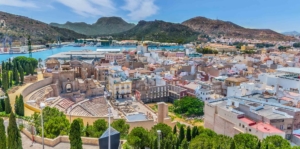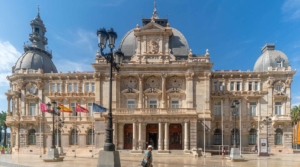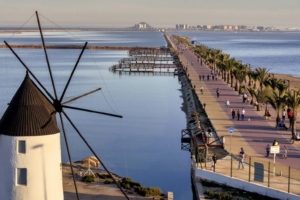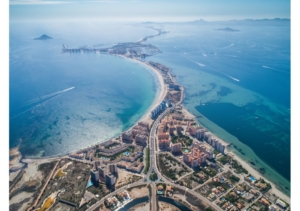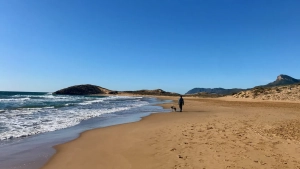🏰 Historic City of Cartagena
Cartagena is a Spanish city and a major naval station on the Mediterranean coast, south-eastern Iberia. Cartagena has been inhabited for over two millennia, being founded around 227 BC by the carthaginians. However, the city had its heyday during the Roman Empire, when it was known as Carthago Nova (the New Carthage). The confluence of civilizations as well as its strategic harbour, together with the rise of the local mining industry is manifested by a unique artistic heritage, with a number of landmarks such as the Roman Theatre, the second largest of the Iberian Peninsula after the one in Mérida, an abundance of Phoenician, Roman, Byzantine and Moorish remains, and a plethora of Art Nouveau buildings, a result of the bourgeoisie from the early 20th century.
⛴️ San Pedro del Pinatar, Los Alcázares & Mar Menor Boat Trip
San Pedro del Pinatar and Los Alcázares are small towns in the Region of Murcia. Their Roman occupation started in 210 B.C., with them recognizing the salt properties of the Mar Menor and the La Manga 'strip' as a band of security from any invaders. The Romans set up a salt meat and fishing industry and built the first thermal baths and spas in the area. In 210 B.C., the Mar Menor was joined to the Mediterranean Sea and, during the past 1,000 years, it has started to close off from it. It is separated from the Mediterranean Sea by La Manga ("the sleeve"), a sandbar 22 km in length whose width ranges from 100 to 1,200 metres. There are five islets located within the lagoon: Perdiguera islet, Mayor or El Barón islet, Ciervo islet, Redonda islet and del Sujeto islet.
⛱️ Hiking Route: Cala Reona - Calblanque Beach
Calblanque Regional Park is a regional park in the south-east of Spain, and in this country in the autonomous community Región de Murcia. It is one of the best preserved areas in the Mediterranean littoral in spite of human activities and interaccions. The Cala Reona-Calblanque route follows the coastline along a path that will allow you to enjoy magnificent views of the coves, beaches and cliffs, the Rasall salt flats and the remains of old silver mining operations. Its coves and beaches are ideal for a good swim in summer or sunbathing at any time of the year.
🏛️ Murcia City
Murcia is a city in south-eastern Spain, the capital and the most populous city of the autonomous community of the Region of Murcia. It had a population of 460,349 inhabitants in 2021. Murcia was founded by the emir of Cordoba Abd ar-Rahman II in 825 with the name Mursiyah. It is now mainly a services city and a university town. Highlights for visitors include the Cathedral of Murcia and a number of baroque buildings, renowned local cuisine and Holy Week procession. The city, as the capital of the comarca "Huerta de Murcia" is called "Europe's orchard" due to its long agricultural tradition and its fruit, vegetable, and flower production and exports.
